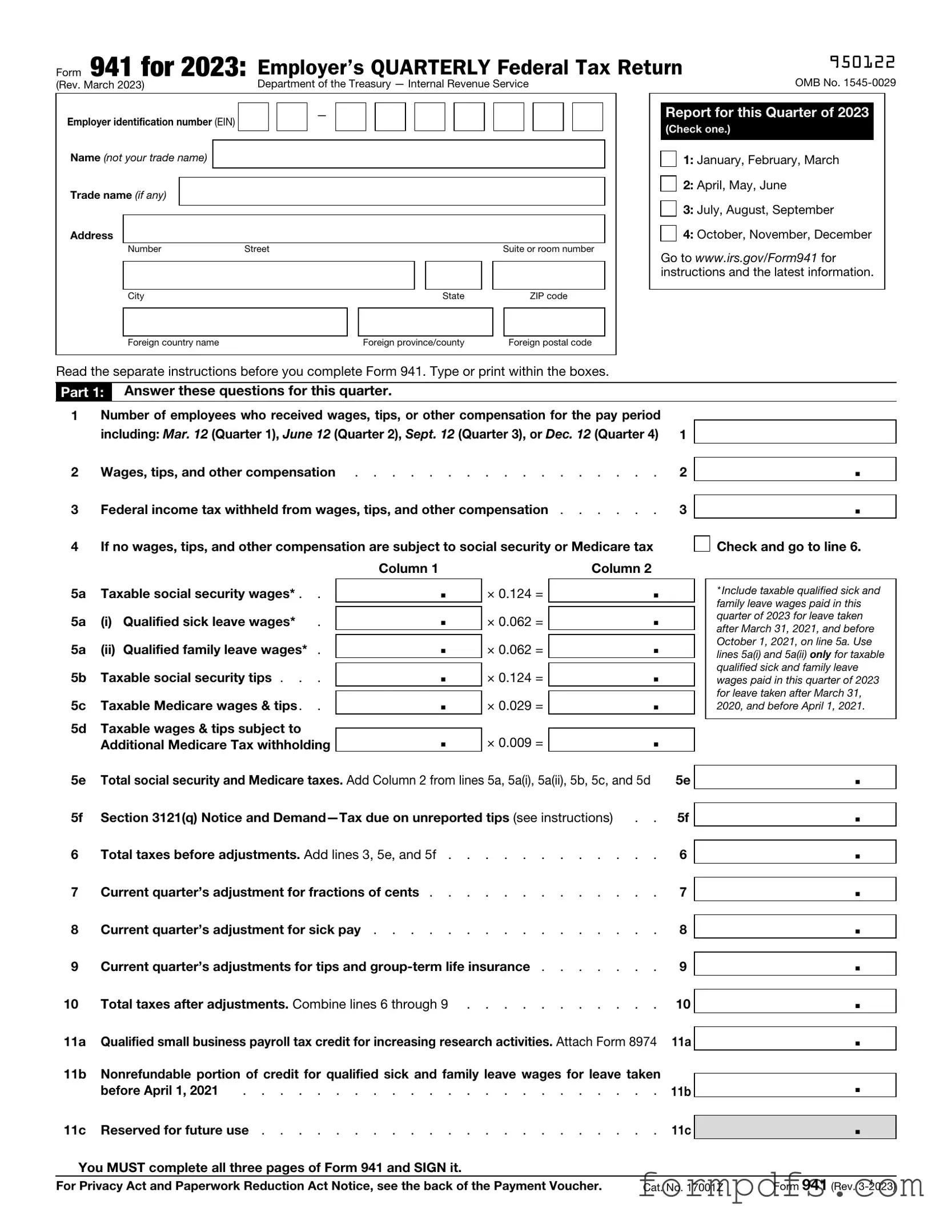What is the IRS 941 form?
The IRS 941 form, officially known as the Employer's Quarterly Federal Tax Return, is a tax form used by employers to report payroll taxes. This includes the federal income tax withheld from employees' wages, as well as Social Security and Medicare taxes. Employers must file this form quarterly, providing essential information about their payroll tax liabilities and payments.
Who needs to file Form 941?
Any employer who pays wages to employees and is required to withhold federal income tax, Social Security tax, or Medicare tax must file Form 941. This applies to businesses of all sizes, including corporations, partnerships, and sole proprietorships. If you have no employees during a quarter, you still need to file a return indicating that there were no wages paid.
When is Form 941 due?
Form 941 is due four times a year, specifically on the last day of the month following the end of each quarter. For example, the due dates are April 30 for the first quarter, July 31 for the second quarter, October 31 for the third quarter, and January 31 for the fourth quarter. It's crucial to adhere to these deadlines to avoid penalties.
What information do I need to complete Form 941?
To fill out Form 941, you will need various pieces of information, including your business's name, address, and Employer Identification Number (EIN). You will also report the total number of employees, wages paid, and the amounts withheld for federal income tax, Social Security tax, and Medicare tax. Additionally, you may need to provide details about any adjustments for the current quarter.
What if I make a mistake on Form 941?
If you discover an error after submitting Form 941, you can correct it by filing Form 941-X, Adjusted Employer’s QUARTERLY Federal Tax Return or Claim for Refund. This form allows you to amend the original return and correct any discrepancies. Be sure to provide accurate information to avoid further complications.
Can I file Form 941 electronically?
Yes, you can file Form 941 electronically using the IRS e-file system or through various authorized e-file providers. Electronic filing is often faster and more efficient, reducing the chances of errors. It also allows for quicker processing of your return and any refunds due.
What happens if I don’t file Form 941?
Failing to file Form 941 can lead to significant penalties and interest on unpaid taxes. The IRS may impose fines for late filing, and continued non-compliance can escalate to more severe consequences, including audits. It's essential to stay compliant to avoid these issues.
How do I pay the taxes reported on Form 941?
Employers can pay the taxes reported on Form 941 through various methods, including electronic funds transfer (EFTPS), credit or debit card payments, and checks or money orders. Ensure that payments are made on time to avoid penalties and interest charges.
Where can I find Form 941?
You can obtain Form 941 directly from the IRS website. The form is available for download in PDF format, along with detailed instructions on how to fill it out. Additionally, many tax software programs include Form 941, making it easier for employers to complete their filings.
